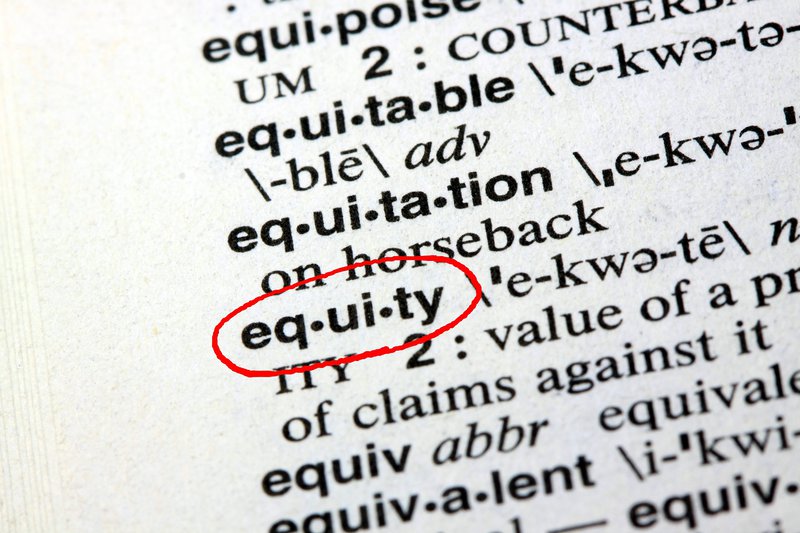The Way We Talk: Choice
Blog Post

Shutterstock
Sept. 27, 2013
This is the fourth in a series of posts reflecting on terminology pervading today’s polarizing debates about American education. In each post, we ask how various buzzwords—“professionalism,” “accountability,” “equity,” and the like—influence the conversations we have. What are the strengths, weaknesses, and blind spots that come with framing our arguments in each of these terms? The hope is that assessing the implications of the way we talk will prompt more productive discussions about improving PreK-12 education.
In the last “The Way We Talk” post, I argued that equity is the closest thing that American public education has to a sacred purpose. We expect our schools to be equal opportunity catalysts; once students complete their PreK–12 (or sometimes PreK–College) education, we generally act as though society has provided them an adequate platform for determining the course of their lives. Put another way, public schools are our community’s most tangible, most democratic commitment to sustaining the American Dream.But democratic equity only covers part of the story. The United States is a liberal democracy. Its attitude towards education (and politics more generally) also stems from individualist liberals like Thomas Jefferson, Thomas Paine, and John Locke. If we care about equity for all, we also care about choice. We care about freedom.
We most commonly associate choice with parents and schools. Most “choice” programs involve the former selecting one of the latter for their children.
At this level, it’s possible to see choice and equity as fully compatible. Charter schools, voucher programs, and other common “school choice” policies are popular (in some cases and places) because they offer anxious parents educational options for their children. The United States is increasingly segregated by class, and low-income students are more likely to be condemned to our least-resourced, least-effective schools and teachers. Without school choice initiatives, some children’s zip codes sentence them to a lifetime of remediation, incarceration, and marginalization.
Here’s an example of what I mean: we often hear the Perry Preschool Study cited as evidence for the amazing effects of high-quality public preschool programs. And it is. But we rarely look very hard at the outcomes for the control group—those children who did not attend the program. We often hear that the Perry Preschool students were less likely to be arrested, drop out of high school, and use welfare services. How did their peers outside the program do?
There’s no way to sugarcoat things. It turns out that when these children missed out on high-quality preschool, they also missed out on anything like a stable middle-class life. More than 50 percent of these children grew up to be arrested five times or more by the time they turned 40. Worse still, 31 percent of the non-Perry group was eventually charged with committing violent crimes. Less than half of the group graduated high school. By age 40, nearly 90 percent reported being on social services at some point in their lives.
This is just a miniscule slice from a staggering ream of data showing that America’s educational inequity plays a huge role in maintaining socio-economic inequality in the United States. Here’s another famous one that ought to knock you flat: American students who read below grade level at the end of first grade have a one in ten chance of catching up. In other words, by the time students are seven years old, we have a pretty good idea about their prospects for reaching full adult literacy. Without strong reading skills, their economic options dwindle considerably. So do their chances of being able to afford a house in a well-resourced, highly-effective public school district (let alone private school tuition). This is the cycle of poverty seen through an educational lens.
Faced with these odds, parents who live in persistently dysfunctional school districts see school choice as an extraordinary lifeline. Surely it is more just, more fair, and even more equitable to free their children from schools this ineffective. While charter school quality varies a great deal according to each state’s charter laws, recent evidence suggests that they are frequently a better choice than traditional public schools serving similar student demographics.
There’s no question that charter alternatives to in-district neighborhood schools are sometimes rife with their own problems, but many parents still jump at the possibility of better educational opportunities for their children. Even an uncertain roll of the dice trumps a certain educational disaster.
So, are school choice and educational equity always concordant goals? Not so fast.
Some note that choice programs act as an escape hatch for active students and parents to abandon struggling traditional public schools. Even if we stipulate that students in charter schools (for example) sometimes get better opportunities and outcomes than they would have in their default in-boundary school, that doesn’t change the equity equation. In most cases, when these students (and their active parents) leave the traditional school behind, they still leave it intact.
Think of this as an argument over the appropriate lens of analysis. From an individual perspective, choice programs look equitable. They extend more—and potentially better—educational opportunities to at-risk students. From a systems-level perspective, however, it’s harder to make this case. Despite allowing some motivated individuals the chance to escape, choice programs often leave systemic inequities in place.
That’s why, as we use it today, “choice” is best thought of as a policy tool, not a goal in itself. Choices that are no better than families’ default educational options are hardly worth considering. Similarly, choice programs that leave many (often the majority) of students stuck in failing schools are inadequate. When we talk about choice, then, we need to be mindful of its limits."